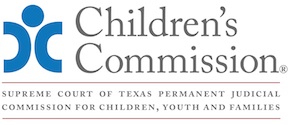C. Permanency Plan for Child is Required
1. Permanency Plan
DFPS must prepare a permanency plan for each child. DFPS must give a copy of the plan to each person entitled to notice pursuant to Tex. Fam. Code § 263.0021(b) not later than 10 days before the date of the first Permanency Hearing. Tex. Fam. Code § 263.3025(a).
The permanency plan must contain information required by Tex. Fam. Code § 263.303 and DFPS shall modify the permanency plan as required by the circumstances and the needs of the child. Tex. Fam. Code § 263.3025(b) and Tex. Fam. Code § 263.3025(c).
2. Permanency Goals
The permanency plan must include concurrent permanency goals consisting of a primary goal and at least one alternative permanency goal. Tex. Fam. Code § 263.3025(d). Appropriate and legally recognized permanency goals include (in order of preference):
• Reunification of the child with a parent or other individual from whom the child was removed;
• Termination of parental rights and adoption of the child by a relative or other suitable individual;
• Award of permanent managing conservatorship of the child to a relative or other suitable individual; or
• Another planned, permanent living arrangement for the child (APPLA). Tex. Fam. Code § 263.3026(a).
If APPLA is identified as the child’s permanency plan, DFPS must document a compelling reason why the other permanency goals are not in the child’s best interest. Tex. Fam. Code § 263.3026(b).
|
Special Issue: Although an APPLA plan anticipates that the child will remain in state custody until age 18, it is not simply long-term foster care. Like the other options, it must involve an adult making a permanent commitment to the child, but in a slightly different context than when permanent managing conservatorship is granted to the adult. There are four categories of APPLA listed in the CPS Handbook § 6212.4 (located at https://www.dfps.state.tx.us/handbooks/CPS/Files/CPS_pg_6200.asp#CPS_6212_4): • APPLA: Other Family, DPFS Conservatorship – DFPS is awarded permanent custody of the child. The child would live in the least restrictive and most family-like setting possible (for example, with fictive kin or a relative). • APPLA: Foster Family, DPFS Conservatorship – DFPS is awarded permanent custody of the child. The child would live in a foster home until he or she reaches adulthood. • APPLA: Independent Living – DFPS is awarded permanent custody of the youth. The youth lives in a setting other than a family setting, such as a foster group home, a residential treatment setting, or other institutional setting until he or she is age 18 and exits to an independent living situation. • APPLA: Community Care – DFPS is awarded permanent custody of a youth with an intellectual or developmental disability. The youth lives in a setting other than a family setting, such as a Home and Community-based Services (HCS) provider home, or an institutional setting. When the youth reaches adulthood, a legal guardian will be needed to look after the youth’s well-being. Permanency Hearing after Final Order |
